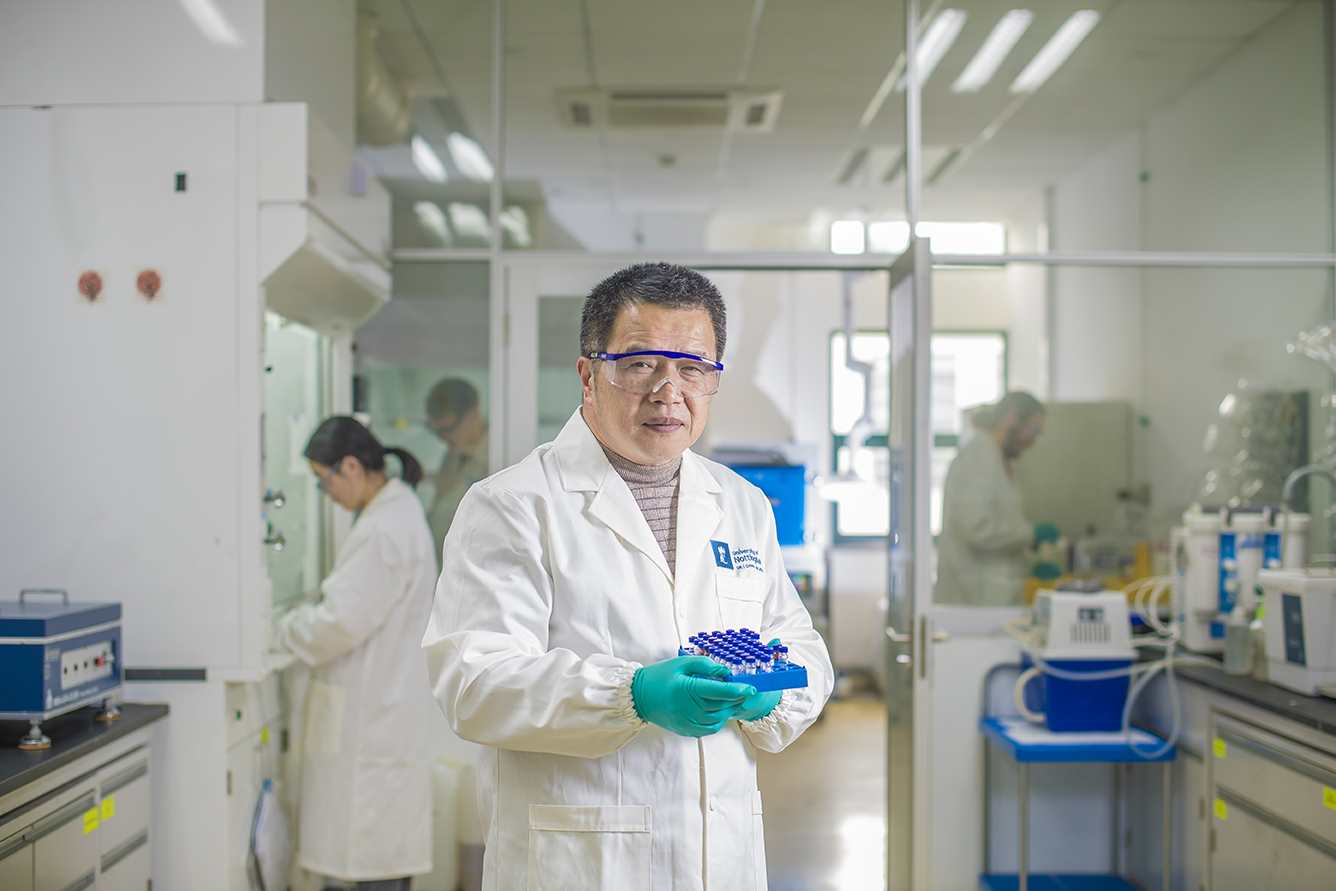
April 13, 2018, by Sophie Moyses
Supercharging the future: Professor George Chen
Professor George Chen, Li Dak Sum Professor in Electrochemical Technologies at our Ningbo China Campus talks about his research into pioneering technologies for a cleaner, greener future.
Can you explain your research?
The world needs to find clean energy alternatives to fossil fuel for industry, domestic use and transportation. My work focuses on electrical power sources and storage, and the related chemistry and engineering. Specifically, we have invented a supercapattery, which is a device that combines the advantages of a battery and supercapacitors. While a supercapacitor is an extremely powerful device, it has low energy density. Batteries on the other hand, have high energy density but low power. The supercapattery offers the best of both; with very high power and energy density. This lends itself particularly well to electric transport, such as buses, light rail and underground trains. The next stage is to take the supercapattery technology from the laboratory and make it a commercial reality.
Where do you see this research heading in the future?
The work we’re doing is not only for China, it’s suitable for global markets because the demand for high energy and high power electric power sources is broad. We’re hoping to build on our preliminary supercapattery work to find a more efficient way of converting, for example, solar energy into electricity. Car manufacturers, battery producers and resources suppliers are all interested in our research.
Why is collaboration important?
As the world becomes more complex problems become more challenging to solve. There’s no single solution for the difficulties faced by humanity nowadays, so collaboration is the way forward. We’re working with colleagues at the University of Nottingham Ningbo Campus such as Professor Chris Gerada, who specialises in electric motors while I’m focused on energy storage and power sources. We’re also collaborating with the Shanghai Institute of Applied Physics on the next generation of nuclear energy technology.
Where can this research can be used in everyday life?
A good example of how our research relates to people’s normal lives is a car’s use of energy. You can compare a supercapattery to a tank of petrol. The energy content in petrol is released as heat through combustion and that releases carbon dioxide. A supercapattery’s energy content is electricity that does not release carbon dioxide, but it does the same job of powering your vehicle. The benefit of electric cars is obvious. You can use solar panels on your roof to collect electricity from sunlight in daytime and store it in the supercapattery, and use that stored electricity to charge your car’s battery during night. You are generating your own energy; isn’t that exciting?
How does the University of Nottingham Ningbo China support your research?
This University has supported my research in several ways. One is providing the laboratories, equipment and staff members; the other is fostering relations with the Ningbo government and local industry. Additionally, the University has also backed my work in terms of intellectual property usage. Without the IP, it would be impossible to explore the commercial potential of our research.
What advice would you give to someone who was starting out in research?
For those early career academics, particularly in engineering, I would say pursue your ideas. Don’t forget where you started from, always keep your efforts up and don’t forget your goals.
Posted in
research
No comments yet, fill out a comment to be the first

Leave a Reply